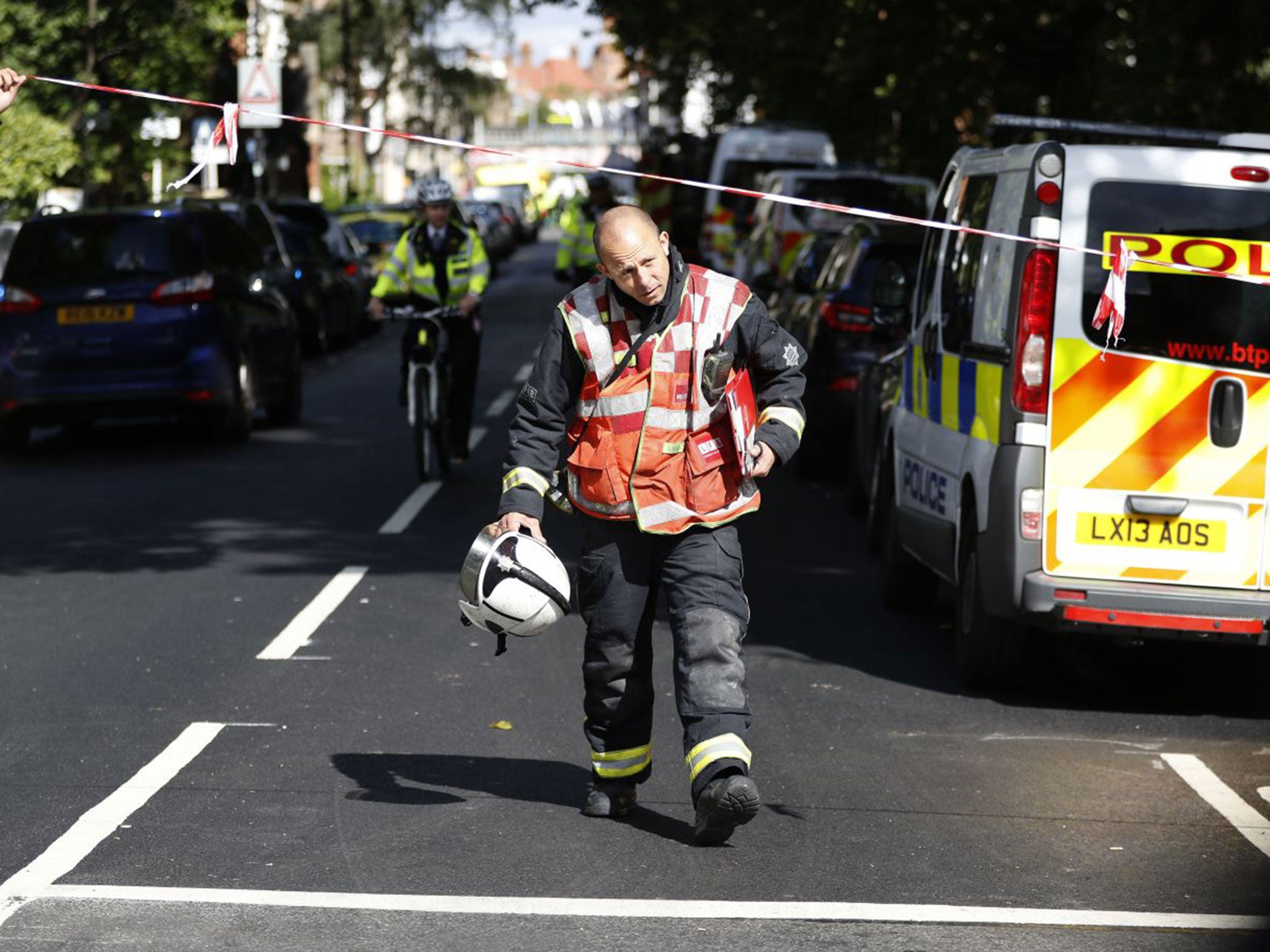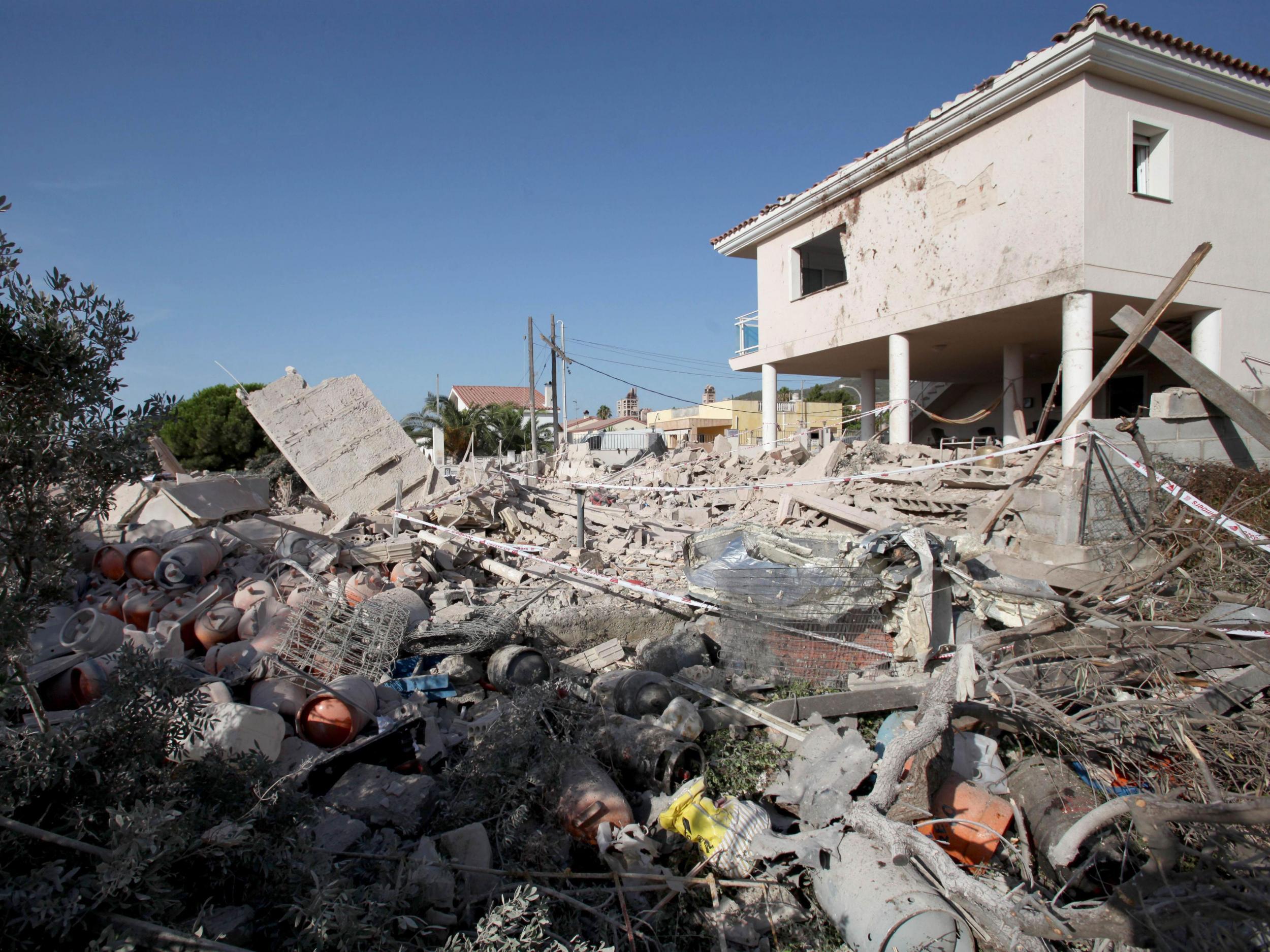London attack: Parsons Green bomb contained 'mother of Satan' explosive used in Manchester bombing
Experts believe bomber made mistake in manufacture that meant device failed to fully explode

Your support helps us to tell the story
From reproductive rights to climate change to Big Tech, The Independent is on the ground when the story is developing. Whether it's investigating the financials of Elon Musk's pro-Trump PAC or producing our latest documentary, 'The A Word', which shines a light on the American women fighting for reproductive rights, we know how important it is to parse out the facts from the messaging.
At such a critical moment in US history, we need reporters on the ground. Your donation allows us to keep sending journalists to speak to both sides of the story.
The Independent is trusted by Americans across the entire political spectrum. And unlike many other quality news outlets, we choose not to lock Americans out of our reporting and analysis with paywalls. We believe quality journalism should be available to everyone, paid for by those who can afford it.
Your support makes all the difference.The bomb that failed to detonate on a London Underground train contained the same powerful explosive used in the 7/7 attacks and deadly bombings across Europe, it has emerged.
Ben Wallace, the security minister, confirmed the homemade device contained triacetone triperoxide (TATP), known as the “mother of Satan”.
The moniker is earned by the instability of the explosive, which can be ignited by heat, friction, static or even movement, causing the deaths of several would-be bombers.
“The [Parsons Green bomb] used the type of explosive similar to that used in Manchester [but] it didn’t go off,” Mr Wallace told BBC Radio 4’s Today programme.
“We are trying to track down who did it, whether it’s a bomber or bombers…there’s potentially a very dangerous individual or individuals out there and we need to track them down.”
Salman Abedi, the Manchester Arena bomber, built his device using TATP and nails, while the explosive has been found mid-production in several plots across Europe.
TATP, which can be made in under a day using chemicals widely available on the high street, has become a hallmark of Isis attacks including those in Paris and Brussels.
The group claimed responsibility for attempted bombing in Parsons Green with a statement saying it was carried out by "soldiers of the caliphate".

Mr Wallace said work was ongoing to prevent people buying the necessary ingredients and accessing bomb-making manuals distributed by terrorist groups online.
The Terrorism Referral Unit has taken down more than 250,000 pieces of extremist information down, he said, adding: “There is definitely more to be done.
“We take a lot down but sometimes these things reappear and we go at them again.”
The Independent was able to access the bomb-making manual believed to have been used for the device in Parsons Green – as well as the Boston bombings and other massacres - in under five minutes on Saturday morning.
Experts believe the device planted on the District Line in Friday morning’s rush hour used TATP and a “crude” delay timer but failed to fully explode.
Commuters described a “fireball” bursting from the device and a strong chemical smell, with wires and fairy lights seen trailing from a bucket filled with a thick white liquid.
At least 29 people were injured in the blast, but investigators believe the toll would have been far worse if the TATP had detonated as intended.
Major General Chip Chapman, the former head of counter-terrorism at the Ministry of Defence, the shockwave effect from a full explosion could have been deadly, while the subsequent blast effect could have killed more.
“This absolutely didn't function properly because...one ounce of TATP is enough to blow car doors off,” he added.
David Videcette, a former counter-terrorism detective in the Metropolitan Police, said an initial fireball is normally intended to set off the main charge of explosives.
“What often happens with people who try to make bombs is they don’t test the main charge and the initiator together,” he told The Independent.
“They know they work individually, but the difficulty comes with the chain reaction.”
In a similar incident at Brussels Central Station in June, a suitcase bomb packed with nails burst into flames but did not explode, while Stockholm attacker who killed five people with a lorry in April was burned by a failed device.
In October, a homemade bomb made using an al-Qaeda manual failed to detonate on a Jubilee Line train at North Greenwich Tube station.
Then in May, a man was found guilty of building a bomb using fairy lights and a pressure cooker with the intention of targeting a railway line in the Midlands.
Recently Isis has issued advice on how to make bombs using the explosive TATP and incendiary devices, while calling for indiscriminate attacks in countries including that UK that are targeting its militants in Syria and Iraq.

The explosive has been favoured by terrorists because of the ease with which ingredients can be obtained and its ability to evade some explosives detectors because it does not contain nitrates.
TATP was used by the al-Qaeda supporters who massacred 56 people in the London bombings on 7 July 2005, and more recently by Isis in the November 2015 Paris attacks, March 2016 Brussels attacks and bombings across Iraq and Syria.
The Isis cell that carried out last month’s attacks in Spain had manufactured a quantity of the explosive and at least one suicide vest, but accidentally blew up their stock along with 120 gas canisters at a hideout in Alcanar.
The blast killed militants and forced others to carry out a “rudimentary” version of their original plans using vehicles and knives the following day.
Dr Sidney Alford, an explosives engineer, previously told The Independent making a lethal quantity of TATP could take just 24 hours.
“It’s simple,” he added. “It takes only about a couple of hours to make, then you need to filter it and wash it and dry it.
“How long it takes to dry depends on your facilities but in a normal house with a radiator or something to stand it on, you could leave it overnight.”
Police have arrested one suspect, an 18-year-old man detained in Dover, over the attempted bombing in Parsons Green but suggested others remain at large.
The terror threat level remains at critical after being raised overnight, meaning further attacks are considered “imminent”, and armed police and soldiers have been deployed to sensitive sites.
Join our commenting forum
Join thought-provoking conversations, follow other Independent readers and see their replies
Comments